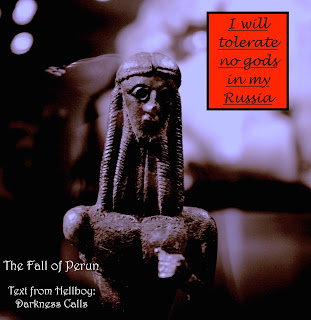The X-Files,
Season 1, Episode 18 – Shapes
I suppose one might critique the way that indigenous tradition
and mythology is utilized for the spooky storytelling of the series, but the
episode certainly makes an effort to portray Native Americans with empathy and
nuance. Significantly, we get a mention
of the conflict at Wounded Knee in 1973, when armed Native American activists
faced off against U.S. Marshals and F.B.I. agents. (https://en.wikipedia.org/wiki/Wounded_Knee_incident)
A Native American man at the bar growls, “What I learned
fighting the F.B.I. is… you don’t believe in us, and we don’t believe in
you.” It’s a poignant framing of a history
of conflict and oppression that goes back centuries. Mulder has a rather sweet reply: “I want to
believe.” It’s his trademark line of
course, normally indicative of his quest for the supernatural. Yet, here, it’s a sign of good faith and
respect. The exchange seems to suggest
that the brutality and tragedy of settler colonialism can be somehow
transcended or mitigated by openness and communication. “I want to believe.” It’s not quite belief – it’s a hope and a
yearning. It’s a place to start.
Yet some are not so optimistic. Joe Goodensnake – evidently a werewolf of
some kind – was shot by a local ranchman.
Joe’s sister, Gwen, is hostile towards Mulder and Scully: “I hate suits
who are always here when they want something from us, but when we need help,
they’re nowhere to be found.” Later, the
son of Goodensnake’s killer shows up at the funeral. “I just want to show my respects,” he
insists. “I don’t want your respects,”
Gwen replies. “I want your heart to grow
cold. I want you to feel what I’m
feeling!” She spits at the ground in
front of him.
In God is Red,
Vine Deloria, Jr. writes, “Until the occupation of Wounded Knee, American
Indians were stereotyped in literature and by the media. They were either a villainous warlike group…
or the calm, wise, dignified elder sitting on the mesa dispensing his wisdom in
poetic aphorisms.” Even if Native
American mythology is here appropriated for mere television entertainment, at
least it pushes the viewer beyond the most blatant stereotypes and encourages them
to think more about a history that many have forgotten.
Eventually, Mulder gets the full story from Ish, though
the Indian still calls him “F.B.I.” The
problem is a Manitou – an evil spirit that can change people into dangerous
animals. Curiously, there is speculation
that the creature can be inherited. There’s
something intriguing about an evil spirit passed down through bloodlines, for
it mixes the tangible and the ephemeral, the physical and the abstract.
The cinematography is stunning, particularly during the
funeral preparations. Bodies seem to
melt into the mist like ghosts. The
close-up shots of the taxidermy specimens feel a bit forced at the beginning of
the show, but they really pay off by the end as Mulder panics and shoots a
bear’s stuffed head in the claustrophobic house, a place now filled with teeth
and shadows.
This is a case where the simple title really adds
something to the episode. Shapes.
Obviously, it’s a reference to the shape-shifter werewolf. Yet the word invites us to think more broadly
about form and transformation. Tooth and
claw and gun. Corpse and flame and mist. Human and beast. The shapes of the world.
Image: Kano Tomokazu (Getty Open Content)









